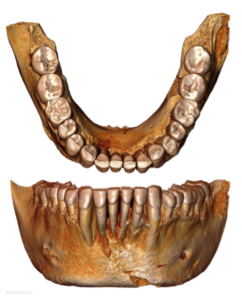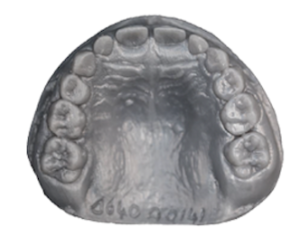Opportunities
Postdoctoral Research Position (Level A) in Dental Histology
Join our team at the Palaeodiet Research Lab! We’re looking for a passionate postdoctoral researcher with expertise in dental histology to
contribute to our groundbreaking research on human adaptations during major transitions.
As part of the Australian Research Council Discovery Project, you’ll delve into the Neolithic Revolution, reconstructing diets, health, and
lifestyles of ancient Mediterranean populations. Your role involves establishing a cutting-edge dental histology lab, conducting pioneering
research, and collaborating with leading institutions globally. This position will be for three years and will have no teaching obligations.
Key selection criteria
- A doctorate qualification in Biological Anthropology, Archaeology or closely related discipline
- Demonstrated analytical and manuscript preparation skills; including a track record of refereed research publications
- Ability to solve complex problems by using discretion, innovation and the exercise diagnostic skills and/or expertise
- Well-developed planning and organisational skills, with the ability
to prioritise multiple tasks and set and meet deadlines with excellent
written communication and verbal communication skills with proven
ability to produce clear, succinct reports and documents - Research experience in dental histology, histomorphometry and with tooth thin section preparation
- Knowledge of dental tissue microstructure and dental morphology
- Experience in working with transmitted light microscopy
PhD Scholarship at Monash University
Postgraduate research scholarships are offered to both domestic and international applicants to undertake a higher degree by research at one of Monash University’s Australian campuses.
Full details are available at Monash Graduate Research Service.
2024 Honours Projects
The Department of Anatomy and Developmental Biology runs a Bachelor of Science, Bachelor of Biomedical Science and Bachelor of Medical Sciences Honours year program. Students who have completed their Honours projects in this Department have had very successful career outcomes. Most have gained employment, continued on to complete their PhD or enrolled into postgraduate Medicine or allied Medical courses.
For 2024 the Palaeodiet research Lab offers two Honours project:
FORM, FUNCTION AND WEAR OF NEANDERTHAL TEETH

Background: Size and shape variation of molar crowns in humans play an important role for testing phylogenetic hypotheses and for better understanding how species adapted to their environment. Recent studies have shown that Neanderthal dental morphology is characterised by distinctive traits with a marked expression and high frequency, differing from those of Anatomically Modern Humans (AMH). This Honours project will examine molar functional morphology of important fossil specimens of Neanderthals and AMH using a multidisciplinary approach that integrates dental topographic methods with tooth wear and enamel thickness analyses derived from high-resolution 3D digital models of teeth.
Project aim/s: This Honours project is part of a large international study, funded by the Australian Research Council, that aims to understand if Neanderthal cranio-dental morphology, characterised by an overall robusticity with a forwardly projecting face and extensive anterior dental wear, was truly adapted to resist powerful bite forces.
Specifically, the Honours project has three key aims:
- To reconstruct the relationship between occlusal wear and tooth architecture during masticatory function;
- To compare the masticatory efficiency in Neanderthals and AMH;
- To understand how diet and cultural habits in Pleistocene humans influenced tooth morphology and enamel thickness variation.
Techniques to be utilised: The Honours project will be based on a multidisciplinary approach that include advanced 3D computer methods, dental anthropology, biomechanics, functional morphology, palaeontology and statistics. This approach may also have wide future applications in orthodontics, where the relationship between facial morphology, occlusion and tooth morphology is still not well understood.
MASTICATORY EFFICIENCY OF MODERN HUMAN TEETH: A BIOMECHANICAL STUDY


Background:
Dental enamel is the hardest and most mineralised tissue found in vertebrates. It plays two fundamental roles:
first, it enhances resistance to fracture from biting hard objects. Second, it prolongs tooth lifetime from wear.
However, tooth wear is an inevitable process, a process caused by chemical and/or mechanical factors associated
with the mastication of food, which changes tooth shape, affects function and that compromises structural integrity. Should we consider tooth wear as an adverse, destructive process, or should we consider it as an inevitable adaptation to make our teeth more efficient? Should we prevent or reduce the destruction of tooth substance, or should we actually facilitate it to prolong the life of our dentition?
Project aim/s:
In this project we will investigate if modern human teeth remain functionally efficient for fracturing foods despite wear. We will obtain experimental data of chewing efficiency through mechanical testing that will employ 3D printed teeth and food items. For this study we will use 3D digital models of the dentition of Australian Aboriginal children of the Yuendumu Reserve (Northern Territory), who were annually observed between 1951 and 1971.
Techniques to be utilised: This is an interdisciplinary project between the Departments of Anatomy and Developmental Biology and Department of Mechanical and Aerospace Engineering. The project will be based on dental anatomy, CAD modelling, 3D printing and biomechanics. The methods may have potential applications in biomedicine and orthodontics.
